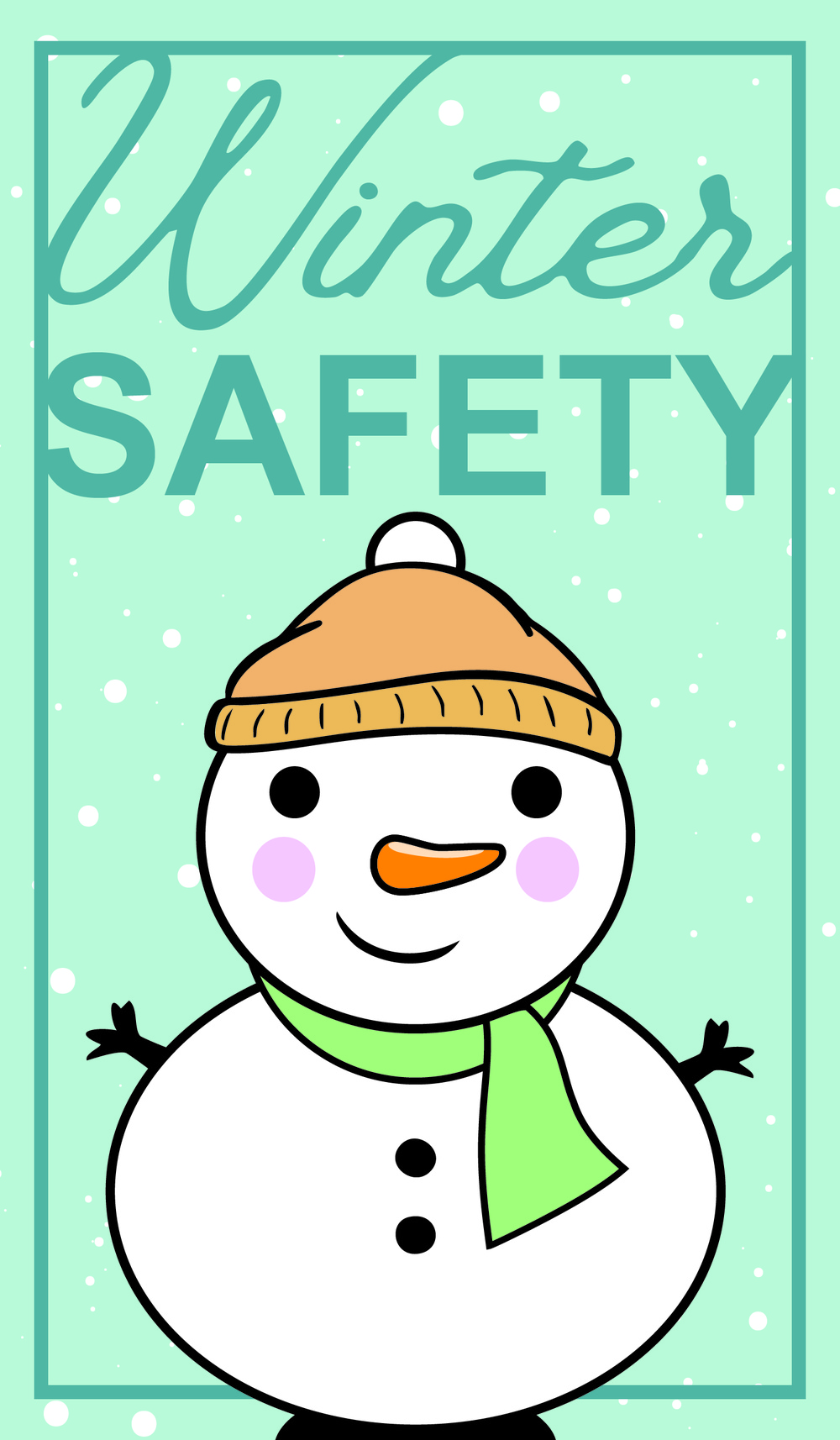DVIDS – News – Arnold AFB Fire and Emergency Services provides safety tips for holiday season
ARNOLD AIR FORCE BASE, Tenn. – With Christmas and New Year’s Day, the coldest months on the calendar are joyous times for many, filled with celebrations, gatherings with loved ones, food and gifts.
However, some of the decorations and devices intended to create a more festive setting or provide comfort as temperatures plummet present potential hazards.
The Arnold Air Force Base Fire and Emergency Services team is urging base personnel to take extra caution and the necessary precautions this winter to help ensure the season and upcoming holidays remain safe and bright.
WINTER SAFETY
Nearly half of all home heating fires occur in December, January and February, according to the National Fire Protection Association. One in every seven home fires and one in every five home fire deaths involves heating equipment.
Arnold FES Fire Prevention Officer Christian Lyle said now is a good time to have home HVAC units inspected by technicians to ensure the systems are in working order.
Those with fireplaces are encouraged to have them professionally inspected each year, regardless of whether the fireplaces are woodburning, gas, electric or other types.
“Make sure home heating devices are inspected and in order,” said Arnold FES Fire Inspector Guy Chastain.
Ensure that space heaters are Underwriters Laboratory, or UL, listed. It is also recommended that users ensure space heaters are equipped with tip-over protection. Heaters with this feature include a sensor that will automatically turn off the heater if it falls or tips over.
The NFPA suggests plugging only one heat-producing appliance, such as a space heater, into an electrical outlet at a time.
Items that could burn should also be kept at least three feet from in-use fireplaces, radiators, space heaters, kerosene heaters and wood stoves.
“There should be no combustibles within three feet of a heat source,” Chastain said.
Following fireplace use, the cooled ashes should be stored in a tightly covered metal container. This container should be kept outside and at least 10 feet from the home and other buildings if it contains some still-smoldering embers.
Lyle said homeowners should have carbon monoxide detectors installed and that the devices should be tested monthly.
Portable generators should be kept outside, away from windows and as far away from the home as possible.
Millions are expected to travel over coming weeks to see family and friends for the holidays. Via its Ready campaign, the U.S. Department of Homeland Security offers the following advice to those traveling by automobile:
• Be aware of the winter risks in locations to be visited. Check the local weather forecasts and warnings before heading out. Visit National Weather Service for up-to-date forecasts and download the FEMA App for alerts in up to five locations.
• Check local weather and traffic reports before heading out.
• If your roads are not in good shape, consider postponing non-essential travel until the roads are cleared.
• Tell others your route and anticipated arrival time.
• Make sure your vehicle is in good working condition before you travel.
• Keep the gas tank as full as you can. A full tank will also keep the fuel line from freezing.
• When driving, increase your following distance from 3 to 4 seconds to 5 to 6 seconds. It takes longer to slow down and stop on icy roads.
• Every vehicle should have an emergency supply kit in the trunk. Kits should be checked every six months and expired items should be replaced regularly. This kit should include jumper cables, flares or a reflective triangle, an ice scraper, a car cell phone charger, a blanket, a map, and cat litter or sand to provide better tire traction.
• Keep family and emergency phone numbers, including your auto insurance provider and the number for a towing company, in your phone.
• Consider keeping a power bank for your phone in your car in case your car loses power.
• If stranded, run the engine for about 10 minutes per hour to run the heater and charge your cellphone. Open a window slightly to let fresh air in and avoid carbon monoxide poisoning.
CHRISTMAS SAFETY
For many, setting up a live Christmas tree is an ideal way to enhance the holiday atmosphere. Still, caution should be taken when selecting and decorating a live tree.
The tree should have fresh, green needles that do not fall off when touched. Lyle said before placing the tree in its stand, two inches should be cut from the base of the trunk. The tree should be kept at least three feet away from any heat source such as fireplaces, heat vents, lights and space heaters.
The tree should not block any exits in the home.
Lyle further stressed that the tree should be watered daily.
Arnold FES officials also offered guidance on what to look for when decorating a tree with lights as, according to the NFPA, almost one-third of home Christmas tree fires are caused by electrical problems.
“As far as lighting on the tree, make sure you’re using UL or some other type of qualified testing laboratory-approved lights,” Lyle said. “Check your lights before putting them on the tree. If they’re worn, if they’re frayed, if the bulbs are loose, it’s best to just go ahead and buy new strands instead of trying to get one more year out of them because that’s a huge hazard.”
Fire officials further suggest that homeowners pay attention to the intended use of their Christmas lights, as some are only for indoor or outdoor use. Lyle said tree lights should always be turned off when leaving the home or going to bed.
The NFPA urges homeowners to bring outdoor electrical lights inside after the holidays to prevent hazards and extend the life of the lights.
Safety officials recommend that live trees be disposed of after Christmas, as dried out trees can present a fire danger. The trees should not be left in the home, garage or outside leaning against the house.
Lyle said those looking to discard their live tree after the holiday can often contact their local recycling program for guidance on how to get rid of it.
Some rely on candles to elevate the holiday ambiance or create a more inviting environment, but this comes with its share of risks. According to the NFPA, more than one-third of home decoration fires are started by candles.
Lit candles should be kept away from decorations and other things that can burn.
“I have to say it, because people have done it before – don’t use lit candles on or around the trees,” Lyle said.
Candles should be blown out when leaving the room or going to bed, according to the NFPA. Children and pets should be kept away from lit candles.
Chastain said a safer alternative is to use flameless candles for holiday decorations.
The NFPA recommends choosing decorations that are flame resistant or flame retardant. According to the association, more than 2 of every 5 decoration fires happen because decorations are placed too close to a heat source.
When entertaining for the holidays, the NFPA recommends that homeowners:
• Test their smoke alarms and tell guests about the home fire escape plan.
• Keep matches and lighters up high in a locked cabinet.
• Ask smokers to smoke outside. Remind smokers to keep their smoking materials with them so children do not touch them.
• Provide large, deep ashtrays for smokers. Wet cigarette butts with water before discarding.
Arnold FES also offered some tips for Christmas cooking safety.
“Everybody loves to have a big meal for Christmas,” Lyle said. “The same rules apply for Christmas as they do for Thanksgiving.”
Unattended cooking is the leading contributing factor in cooking fires and fire deaths. According to the NFPA, cooking causes around 52% of all reported home fires and approximately 36% of home fire injuries. Cooking is a leading cause of home fire deaths, accounting for around 17% of such occurrences.
Those cooking should not leave the home while the oven is in use and should regularly check on food being simmered, baked or roasted. It is recommended that those cooking on the stovetop remain in the kitchen when cooking to keep an eye on the food. Cooks should remain in the kitchen while food is being fried, boiled, grilled or broiled, being sure to turn off the stove if leaving the kitchen even for a short time, according to the NFPA.
Cooks should always make sure the stove or oven is off before departing if they must leave the home. A serviceable fire extinguisher should remain readily available during cooking.
NEW YEAR’S SAFETY
Just as many celebrate our freedoms by shooting off firecrackers and bottle rockets on Independence Day, a number of folks like to ring in the new year with fireworks.
“And just like the Fourth of July, make sure you’re practicing good safety,” Lyle said. “Don’t use fireworks around anything that’s going to be combustible. Use them away from the home. Use them under adult supervision.”
Lyle added that while many like to involve children in the fireworks fun by allowing them to handle sparklers, adults should be aware of the danger. He said sparklers burn at a temperature of at least 1,200 degrees Fahrenheit, creating the risk of serious burns if improperly handled.
Those choosing to partake in shooting fireworks should keep a bucket of water, garden hose or fire extinguisher readily available. During the winter, grass is often dead and dry, increasing the potential for fire to spread should a wayward firework find its way onto such a patch of turf.
Also, because alcohol is often involved in New Year’s celebrations, Lyle suggested having a sober adult on hand to supervise fireworks-related activities.
For additional information, contact the Arnold FES Fire Prevention Office at 931-454-5569 or 931-454-5306.
| Date Taken: | 12.20.2024 |
| Date Posted: | 01.02.2025 10:02 |
| Story ID: | 488090 |
| Location: | ARNOLD AIR FORCE BASE, TENNESSEE, US |
| Web Views: | 5 |
| Downloads: | 0 |
PUBLIC DOMAIN
This work, Arnold AFB Fire and Emergency Services provides safety tips for holiday season, by Bradley Hicks, identified by DVIDS, must comply with the restrictions shown on https://www.dvidshub.net/about/copyright.


 Private Internet Access gives you unparalleled access to thousands
of next-gen servers in over 83 countries and each US state. Your
VPN experience will always be fast, smooth, and reliable.
Private Internet Access gives you unparalleled access to thousands
of next-gen servers in over 83 countries and each US state. Your
VPN experience will always be fast, smooth, and reliable.![DVIDS – Images – Yokota lights up the holidays with Winterfest 2025 [Image 6 of 11] DVIDS – Images – Yokota lights up the holidays with Winterfest 2025 [Image 6 of 11]](https://101veterans.com/wp-content/uploads/2025/12/1765168700_1000w_q95.jpg)
![DVIDS – Images – Guardian Arena Bound: S4S-CJFSC Sends Three Teams to Florida Competition [Image 1 of 3] DVIDS – Images – Guardian Arena Bound: S4S-CJFSC Sends Three Teams to Florida Competition [Image 1 of 3]](https://101veterans.com/wp-content/uploads/2025/12/1765125460_1000w_q95.jpg)
